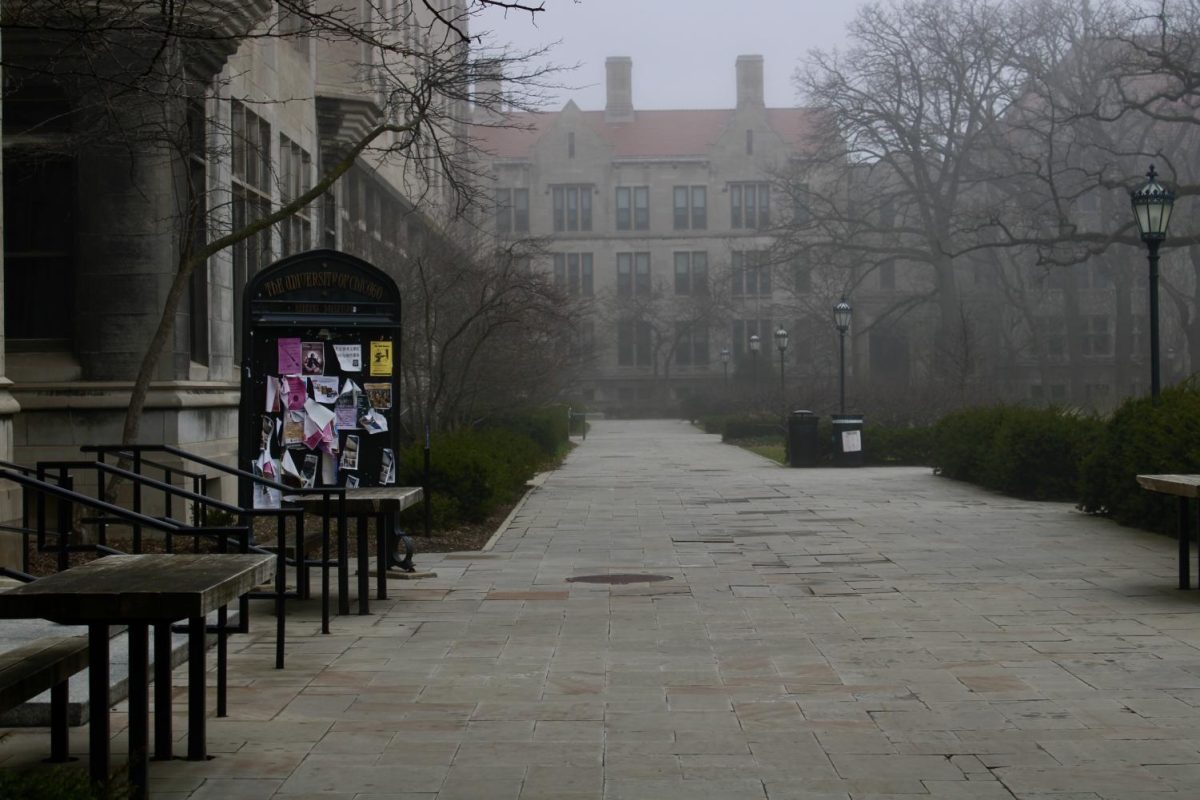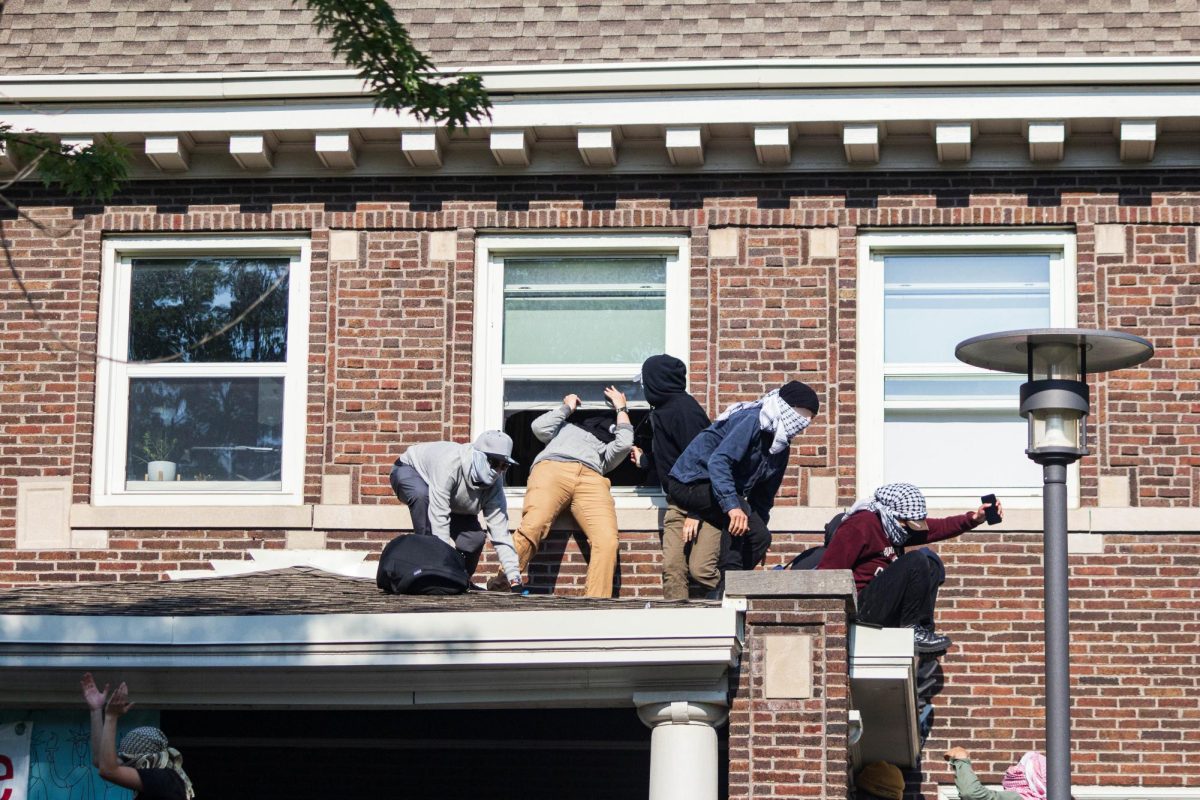Provost Katherine Baicker and Chief Financial Officer Ivan Samstein, along with President Paul Alivisatos, hosted a second invitation-only town hall for faculty and staff on February 6. The presentation included a four-year plan to eliminate the budget deficit by 2028. Their plan focuses on financial restructuring, moderating expenses in administrative and supportive “central” units, and working with “academic” units to reduce spending. The Maroon watched the town hall live.
The biggest addition to the plan focuses on revenue growth through initiatives such as expanded degree offerings, extension programs, philanthropic reach, and potential “research sponsorship.” In a Q&A session following the presentation, faculty and staff criticized the University for straying from its academic principles, and raised concerns about how the plan would affect an ongoing staff hiring freeze and funding for specific units.
The University’s current $239 million deficit is a result of expenses growing faster than revenue, the University claimed. The University estimates that slowing spending growth and increasing revenues by 1–2 percent each over the next four years will allow the financials to break even.
Baicker, Samstein, and Alivisatos each stressed the University’s ongoing commitment to its core values, including a love for learning and freedom of expression, as it reevaluated strategies to close the budget deficit and more closely align revenue costs and spending. According to Alivisatos, this commitment to the values over time has made the University a model for building trust with society.
He and Baicker also see the unique place the University holds in the public discourse as a payoff of past investments to strengthen the school’s principles. “We’re in a position to capitalize on those investments to make sure we have the resources to continue to invest in eminence,” Baicker said.
While Baicker hopes long-term investments in the graduate and undergraduate student experiences will eventually prove profitable through alumni philanthropy, she stressed the need to think about optimizing and capitalizing on investments in the immediate future.
A previous town hall held on December 7 contextualized the University’s 2023 budget deficit of $239 million by comparing it to the school’s overall financial health, as well as to peer institutions. The meeting presented the University’s investments as strategic assets that now require sacrifices for the institution to keep up to speed with older peer institutions that often have larger endowments.
When reviewing the similar material in the second town hall, Samstein said that deficit growth was primarily a result of the University’s aggressive investment strategies, as well as the University’s decision to prevent layoffs during the pandemic and freeze tuition and fees in 2020. Overall, expense growth outpaced revenue growth by 1.2 percent over the last fiscal year. “We need to be as judicious as possible” to get growth rates in line, Samstein said.
Samstein also cautioned that previously stable interest rates are unlikely to be stable going forward. While Fitch Ratings assigned the University a strong AA+ credit rating in 2023, the ratings agency specified that “UChicago’s capacity for material additional new debt beyond the current issuance is limited at the current rating.” Financial statements for 2022–2023 show that the University has increased debt levels significantly over the past year.
Noting that he had been asked at a previous meeting whether the budget challenges were of “tornado scale,” Alivisatos said, “the budget challenge is real, it is important, it does demand our attention, but it does not register as a tornado on the Fujita scale.” After noting that the Fujita scale was invented by UChicago professor Ted Fujita in 1971, Alivisatos recharacterized current University financial pressures as a “manageable thunderstorm.”
According to the presentation, moderating expenditure growth and promoting revenue growth by 1–2 percent each over the next four years would effectively close the deficit. “This is eminently doable… But this is not easy,” said Baicker. With 60 percent of the University’s budget dedicated to salaries, some of which the University pays at a fixed amount under contractual obligation, expense mitigation necessarily entails reducing non-obligatory expenses.
Baicker and Samstein presented a set of “financing efforts” which they believe will begin deficit reduction in 2025, the first year of the plan. The University will focus on “reducing short-term debt and converting to lower cost and lower risk medium-term debt,” according to presentation materials. The Budget Office will keep assessing new ways to reduce risk and spending, aided by improved data from a new enterprise resource management program the University has been rolling in an effort named the “financial systems transformation project.”
Internally, the University will focus on “central administrative efficiencies and spend[ing] reductions.” Baicker stressed that the University understands the need to take the “hardest look” at central units, which she defined as consisting of the Communications Office, Office of the Provost, Financial Services, General Council, Alumni Relations and Development, and other units that provide support and oversight to academic units. While these units only comprise about 15 percent of the spending budget, the plan prioritizes sourcing 30–40 percent of the proposed cuts from within these central units, resulting in them being a smaller share of total spending by 2028. Spending reductions will come from items such as “assessing non-personnel spending” and “improving pricing in [employee] benefit provider contracts.”
The next part of the plan is to “empower divisions and schools to pursue priorities.” According to Baicker, this entails empowering academic divisions to devise their own strategies for growing their respective bottom lines. Baicker said the University understands that the best ideas for improving the budget can come organically from these divisions and wants to supply them with “real-time information and analytical tools to support decision-making.”
According to the presentation, the biggest single initiative would be “growth and new initiatives.” Some initiatives the University is considering include “growing masters programs, 4+1 joint degrees,” and “seeking opportunities for research sponsorship.” The presentation also mentioned the further development of executive education and similar programs to reach non-traditional student populations and the strengthening of philanthropic approaches across the University.
Baicker explained that continued investment in the University is crucial, despite constraints placed on the current budget. “We could close the budget deficit immediately by ceasing things immediately, [but] that would be incredibly short sighted,” she said. The four-year plan to close the budget deficit will allow for growth while increasing efficiency.
During February, the University will continue to source input from various University constituencies, including the Committee of the Council and Undergraduate Student Government (USG) representatives, before releasing and finalizing the 2025 budget.
In March, the office will hold a third town hall and release initial budgets to individual units. In May, they will finalize the overall budget for the new year.
At the end of the presentation, Baicker and Samstein fielded questions and concerns from the audience. These included the University’s ongoing staff hiring freeze and skepticism around the University’s ability to continue growing while placing constraints on its academic units.
One faculty member said that staff morale and hiring freezes put pressure on some of the best, most efficient people in academic departments across the University. From his experience, these people tended to leave and find jobs elsewhere. Due to these concerns, he inquired whether the University would lift its staff hiring freeze that went into effect this past September.
Baicker and Samstein responded that the staff hiring freeze will continue while the University plans for the 2025 budget release, but stressed that no faculty hiring freeze was on the table. Baicker added that the University was looking for ways to make the freeze more flexible, and that hiring has continued for externally funded and critical positions.
In response to a question about the voluntary retirement incentive, which also went into place last fall, Samstein said that it will not extend past its original end date of February 15. He also noted that there has been a larger uptick than expected in voluntary retirements.
The town hall occurred the day after UChicago Medicine (UCMed) publicly announced layoffs of 180 employees, which prompted questions about whether these layoffs would influence the University’s budget decisions. Samstein explained that UCMed’s decision was ultimately to focus on their cost structure, which is separate and distinct from the process that the Budget Office is considering.
Another faculty member critiqued the University’s new plan for undergraduate tuition revenue among academic units. The University plans to divide the revenue among academic units by the number of students enrolled in that unit’s courses. The University explained that this method was the most effective way of lining up costs and revenue. The faculty member, who helped create the previous system, criticized the new model for incentivizing “adjunctification”—where tenure-track and research faculty positions are eliminated in favor of lower cost adjunct and instructional positions—as units look to teach the largest number of students at the lowest cost.
Despite the University’s repeated message that the financial pressures are not yet at a “tornado level”, a Q&A participant expressed frustration with the effects of the current staff-hiring freeze and other steps taken by the University to reduce costs. “It feels like a tornado, full-force.”
















Matthew G. Andersson. '96, Booth MBA / Feb 11, 2024 at 1:22 pm
In business (or in running an efficient state), the financial objective is to have a surplus, not merely close or reduce a budget gap. Ways must be found to reliably predict a consistent surplus, year after year, through constant operational efficiency. Not only does this reflect discipline and managerial competence, but most of all, it has a profound effect on university strategic decision-making, judgement, and choice. Financial surplus also fundamentally drives the ability to relieve student tuition burdens, by deemphasizing student loans, and the “tuition trap” that most colleges and professional schools are in. When universities struggle from one financial fire drill to the next, they are drawn into compromise and conflict of interest, in terms of who they take money from, and what expectations are attached to it. This is true of private donations or government funds. Administration’s ability to raise money at arms length, while controlling and reducing fixed cost, is the central independent variable. Financial stress or even marginal performance, leads to financial corruption and dependency, and a loss of strategic control. UChicago will close its gap in accounting terms, but not necessarily on a cash flow basis, and it will be forced to further compromise itself to corporate and government interests, which have serious ramifications to students. This stems in part from having the wrong types of administrators who come from academia, and trustees who defer to them, or easily direct them, as they use the University as a customer for investment projects. The Covid project is a classic example of how universities will bend to the will of special interests if large amounts of dollars are attached: universities have been showered with billions in bailouts, research funds, and private investment under profound ethical compromise. I discuss some of this further at “Will Universities Ever Admit They Were Wrong About COVID Policy?” at American Thinker (founded by former Harvard faculty), and “Covid on Campus: A Law and Economics Explanation,” at Dissident Prof.
Ted Vehse, Ph.D. '98 / Feb 11, 2024 at 10:42 am
I taught for 23 years at West Virginia University which, likewise, is experiencing unusual financial stresses. A problem equal in seriousness to “adjunctification” is what I would call administrativization. When the administration of an institution outweighs the influence of its combined educational and academic units, bad weather of some kind is on the horizon.